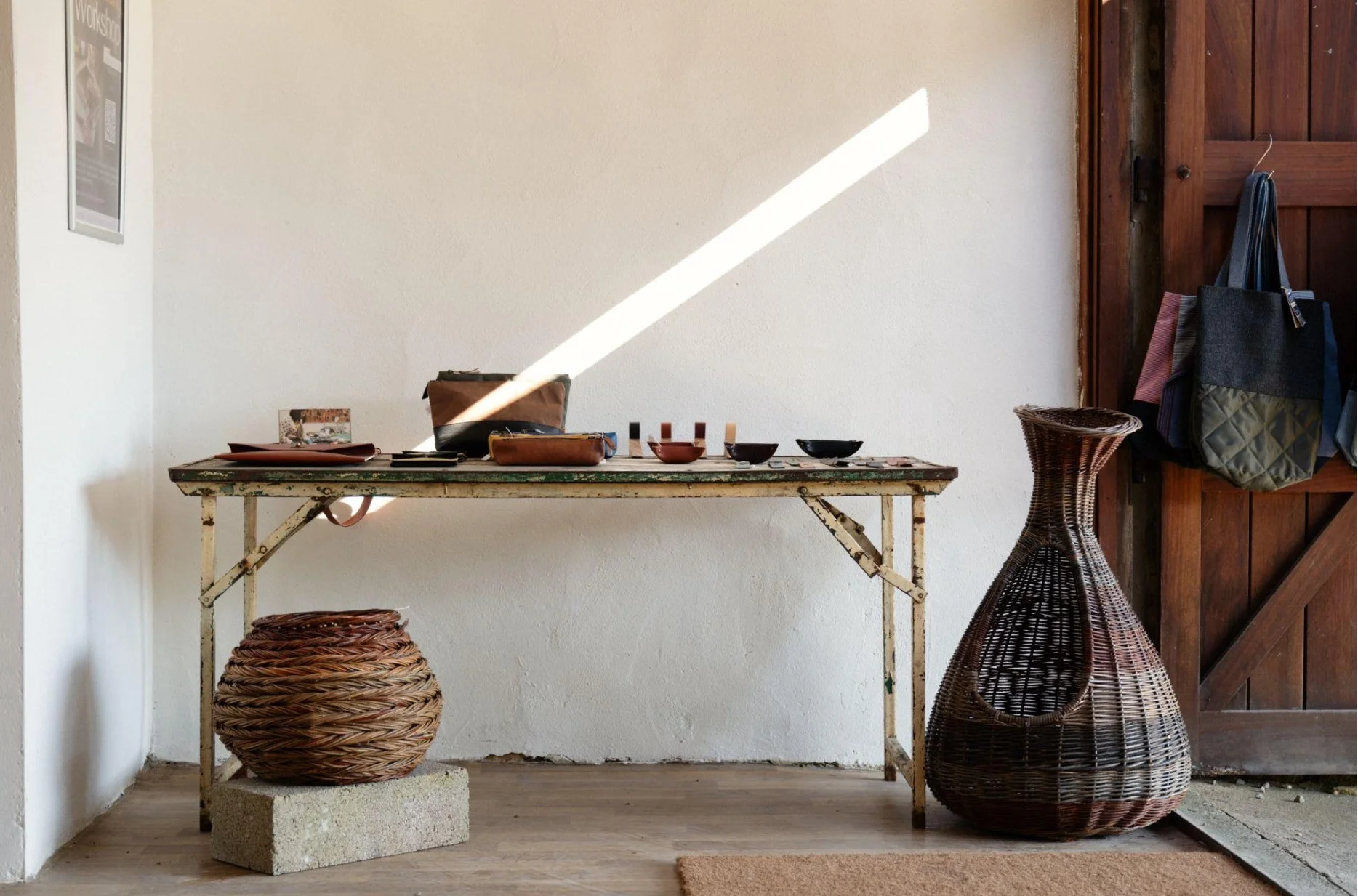Planning for the long-term: essential design considerations
Any project's sustainability, dependability, and longevity rely on long-term building and architectural planning. Design choices impact infrastructural, business, and residential projects, as well as others. Early inclusion of important design features guarantees the structure's future relevance and adaptability, as well as its usability. This essay will discuss important components of long-term success in design strategies.

Any project's sustainability, dependability, and longevity rely on long-term building and architectural planning.
Durability and material choice
The longevity of building materials strongly influences long-term planning. The lifetime and environmental resistance of construction depends on the components chosen. Here, precast dock levellers come in handy. These parts' unparalleled strength and lifetime guarantee quick and seamless loading and unloading. Precast materials cut onsite work and time and enhance structural integrity. Choosing low-maintenance materials can save money and, over time, increase efficiency.
Environmental impact and sustainability
The environmentally sensitive society of today calls for sustainability in every design effort. Using environmentally friendly materials and techniques in your design will help you please more informed stakeholders and follow regulatory criteria. Create sustainably with recycled goods, energy-efficient systems, and green technologies. Giving sustainability a priority will help you create buildings that meet present needs and fit changing environmental conditions.
Flexibility and future-proofing
As society develops and technologies change, structural adaptation becomes increasingly important. Future-proofing your design requires flexible spaces that can be rearranged as demands evolve. Plan open floor patterns, employ modular components, and consider future development. Forecasting changes in use, occupancy, and technology helps the building last longer and avoids the need for expensive retrofitting or upgrading. The building stays relevant and efficient using smart technology and infrastructure that are capable of modification with time.
Cost-effectiveness and lifecycle management
Long-term planning calls for a balance between long-term benefits and upfront costs. While less expensive materials or designs could lower starting costs, they also raise maintenance costs, increase the frequency of repairs, and shorten structural lifetime. Cheaper is investing in great materials and design elements that cut maintenance and repairs. Crucially, lifetime management—determining the whole cost of ownership for the operation, upkeep, disposal, or repurposing of a structure—is crucial. Consider whole lifecycle costs to make informed decisions that maximise project value over time.
Risk management and regulation compliance
Long-term planning also ensures your design satisfies all standards and specifications. Location, project type, and structural usage influence regulatory criteria. Ignoring these criteria could result in legal action, delays, and heavy fines. Furthermore, risk management should be included in the design. This entails preparing the construction to reduce risks like natural disasters and spotting them. Modern engineering and reinforced materials help to shield the construction and its people from unanticipated disasters.
Long-term design and building planning call for various components. Giving durability, sustainability, flexibility, cost-effectiveness, and regulatory compliance top priority will help you create buildings that last and change with the times. Effective long-term planning calls for an awareness of how present actions may impact the project's usability, functionality, and relevance for years to come. Careful design and quality will help keep your creations current and appreciated.
The timing of this exhibition could not be better. At the end of a long winter, and egging on London’s reluctant spring, the Saatchi Gallery brings us FLOWERS in full bloom…
The Royal Academy Summer Show has returned for its 257th exhibition. Curated under the theme of ‘Dialogues,’ the 2025 edition is coordinated by internationally acclaimed architect and Royal Academician Farshid Moussavi and explores art’s capacity to forge dialogues and build sensitivity towards societal concerns such as ecology, survival and living together…
Marylebone’s best-kept secret, Portman Square Garden, is once again set to bloom with life and laughter as Summer in the Square returns in July 2025. Now in its 11th year, this free community festival transforms the usually private garden into a lively…
The South London Gallery will open Thrill, Fill, Spill, a major solo exhibition by internationally acclaimed artist Yto Barrada, on 26 September 2025. Renowned for her cross-disciplinary practice that weaves together sculpture, textiles, film and painting…
Tate Modern will unveil Nigerian Modernism, the first major UK exhibition to chart the evolution of modern art in Nigeria. Opening in October 2025, the show will present more than 250 works by over 50 artists, exploring a rich period from colonial rule through independence and into the global present…
Oskar Zięta is an architect, process designer and artist whose work challenges the boundaries between disciplines. His practice brings together design, engineering, art and bionics to create sculptural forms. His latest installation, ‘Whispers’, is currently on display outside One New Ludgate as part of the London Festival of Architecture 2025…
The Park Corner Brasserie, running under the culinary leadership of Chefs Jean Didier and Anthony Marshall, who serve up refined British fare with seasonal flair from an attractive state of the art kitchen. The menu is delightfully diverse, satisfying everyone’s taste. From a juicy Park Corner Burger to a Dover Sole and even a Slow Cooked Barbary Duck Leg…
The London Design Biennale 2025 has officially opened at Somerset House, running from 5–29 June, bringing together over 40 pavilions from around the world in a bold celebration of global creativity. Now in its fifth edition, this year’s Biennale is curated by Artistic Director Dr Samuel Ross MBE, an award-winning British designer…
Danny Larsen is a Norwegian artist who has transitioned from a successful career in professional snowboarding to establishing himself as a distinctive painter. His detailed neo-pointillist landscapes reflect a deep connection to nature and a personal journey of transformation. Ahead of his debut London solo exhibition…
Renowned Chef Rohit Ghai and business partner Abhi Sangwan have joined forces to open Vatavaran, the newest luxury Indian dining destination in Knightsbridge last autumn, after launching Kutir and Manthan. Chef Ghai has also worked at acclaimed restaurants Benares, Trishna, Gymkhana and Jamavar…
The 25th Serpentine Pavilion for 2025, “A Capsule in Time”, designed by celebrated Bangladeshi architect and educator Marina Tabassum, and her firm, Marina Tabassum Architects (MTA), opens on 6 June at the Serpentine South Gallery lawn…
Lindokuhle Sobekwa is a South African photographer from Katlehong, Johannesburg. Since his first exhibition in 2013, his work on social issues and personal histories—like his photo essay Nyaope—has gained international recognition. A member of Magnum Photos, Sobekwa was recently awarded the 2025 Deutsche Börse Photography Foundation Prize for his project I carry Her Photo with Me…
We like nothing more than finding a wonderful neighbourhood restaurant that is so good it is worth travelling to even when you may not live in its environs. La Poule au Pot (est 1962) is such a restaurant. Not only that, but it will save yourself a trip to France…
June in London is a magical time as the city settles into its summer stride with long days, sunny terraces and fresh seasonal menus. From charming French bistros and intimate wine spots to Veuve Clicquot champagne terraces and trusty Italian cuisine served in lively dining rooms…
The National Gallery has opened Supporters’ House, a new members’ space designed for socialising, dining and unwinding just moments from the heart of the collection. Housed in the beautifully restored former curatorial offices on the ground floor of the Wilkins Building, this is the first time the Gallery has offered a dedicated space for its members and patrons…
Nestled in the bustling heart of London's Piccadilly mere seconds from the tweed suited swagger of Burlington Arcade, the grandeur of Fortnum & Mason and world class art at the Royal Academy sirs the newly opened Cicchetti Piccadilly, a family-run mini empire of reliably elegant Italian eateries…
On Saturday 31 May 2025, the V&A East Storehouse officially opens its doors, offering a revolutionary new museum experience in the heart of East London. Located within the Queen Elizabeth Olympic Park’s East Bank cultural district, this unique facility is not just a store but a fully immersive public space…
Sol Bailey Barker is a multidisciplinary artist whose work explores the connections between ecology, mythology, and speculative futures. Through sculpture, sound, and installations, they blend ancient knowledge with emerging technologies to examine humanity’s relationship with the natural world…
Celebrating 40 years since The Thin Black Line, this landmark exhibition reunites pioneering Black and Asian women artists through historic works, new commissions, and a vibrant programme of live events and screenings…
The rooftop at The Culpeper on Commercial Street in Spitalfields features a charming garden and greenhouse. It’s part of a vibrant venue that also includes a lively pub, a stylish first-floor restaurant, and five thoughtfully designed boutique hotel rooms…
Sachi London · The Culpeper · Yasmin Soho · Flute at The Broadwick Soho · Kioku by Endo at The OWO · Kaso at One Hundred Shoreditch · Jurema at The Mandrake · JOIA Rooftop, Battersea · The Berkeley Rooftop Bar · Frank’s Café, Peckham…
Art Basel, in collaboration with Qatar Sports Investments (QSI) and QC+, has announced the launch of Art Basel Qatar — a pioneering modern and contemporary art fair set to premiere in Doha in February 2026…
Nimrod Vardi and Claudel Goy, directors of arebyte Gallery, discuss how the space is redefining digital art by blending technology, social science, and immersive experiences. From AI and consciousness to the societal impact of tech, arebyte’s bold exhibitions go beyond visual spectacle, focusing on meaningful engagement and innovative presentation…
An unmissable exhibition of Swiss artist Nicolas Party runs at the Holburne Museum in Bath until 31 August 2025. Titled Copper and Rust, this exhibition sees Party engage in active dialogue with the museum’s historic collection to create new work…
In a landmark move set to redefine how the global art world celebrates impact and innovation, the 2025 Art Basel Awards have announced their inaugural group of 36 medalists. These visionary figures—ranging from pioneering artists and curators to emerging creators, cultural patrons, and behind-the-scenes specialists…
Lindokuhle Sobekwa honoured for powerful tribute to his late sister and a poignant reflection on South Africa’s social history…
The Royal Academy of Arts in London is preparing to unveil a stellar line-up of exhibitions in 2026, featuring world-renowned artists, long-overlooked masters, and the brightest contemporary talents. From large-scale retrospectives to open-call showcases…
Photo London returns for its landmark tenth edition, coinciding with Somerset House’s 25th anniversary. Showcasing the evolving landscape of photography, the fair presents everything from AI-driven works and painterly images to textile prints and collage-based creations. With 131 exhibitors and over 400 local and international artists…
Hanna Salomonsson is a London based Swedish ceramic artist. Following a career in landscape architecture, she re-trained in ceramics in 2018. She also holds a BA in Art History, and this combined with her landscape grounding provides a unique vantage point for her ceramic practice…
Vigour and Skills (V+S) brings its Cotswolds atelier to the heart of Kensington for London Craft Week with A Future Made by Hand—an exhibition hosted at The Roof Gardens, open by appointment from 13–18 May…








































